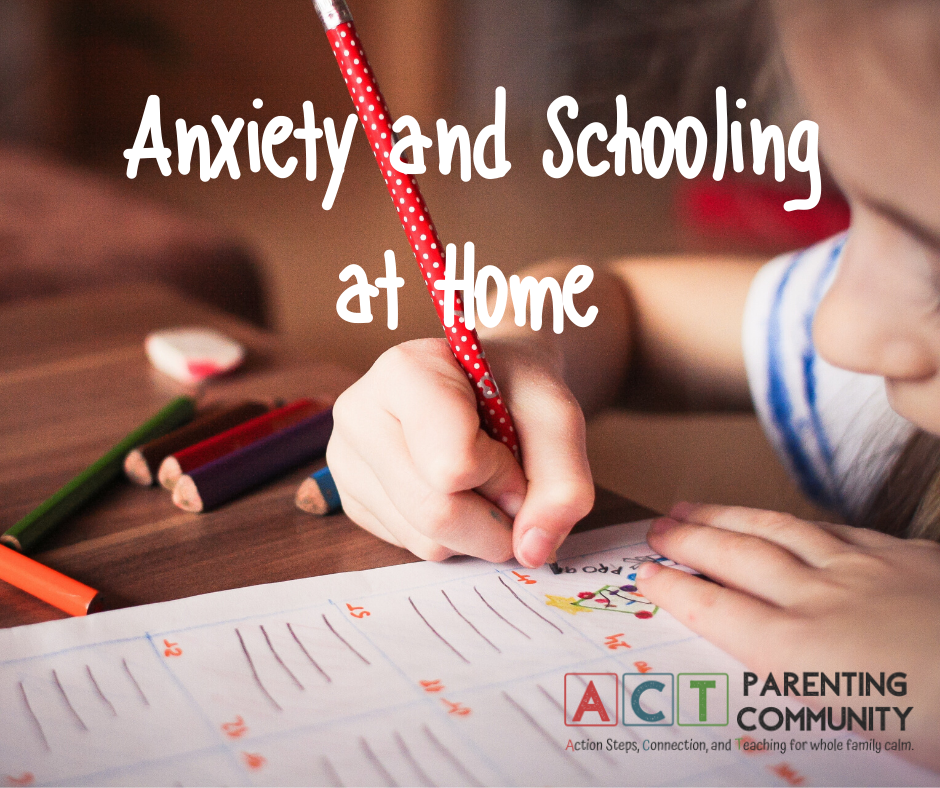I think each one of us would agree that the last two months have full of change that leaves us feeling anxious. And this change has affected most areas of life and added new roles for us to navigate. Now, we are not only a parent, but we have also become our kids main sources for education, fun, friends, cooks, cleaners, doctors and etc.

Let’s focus today on the new role of teacher or co-teacher. I don’t know about you, but being my children’s teacher over the past two months as come with some big highs and deep lows. In this role, as we are learning more about our kids, how they learn, and the growth and challenges they face academically each day. We may have moments where we feel connected and our kids are enjoying school. And in the next moment feel as though we are failing our kids as we battle with the child who is crying over a broken pencil, refusing to read for 30 minutes a day, or ripping up a math paper you just spent the last two hours helping them with.
All kids and parents are going to hit a wall from time to time. It might be struggling with technology, a math assignment, worry about a large assignment, or just sadness about the changes that have taken place in life. This place of overwhelm is often where we see anxiety come up. For some, the anxiety makes them feel so overwhelmed that they just give up. For others, it can show up as a struggle for perfectionism.
So how do we address anxiety and schooling at home?
- Give your kids the space to feel this way. Things rarely gets better by asking kids to try harder. Empathize with them and validate the feelings of overwhelm. Instead of telling them it’s going to be okay or to stop crying/ripping papers/yelling, try saying something like “Wow! You have some big feelings. This feels really overwhelming and you wonder if you’ll ever get it.” or “I wonder if you are feeling sad and missing your friends.” Sometimes just naming the feeling and connecting it to the experience helps everyone recognize and address what is really going on.
- Get their bodies moving! Help them flip upside down when they begin to feel overwhelmed or do 15 jumping jacks, try a brain break activity online such as “Go Noodle” or take a walk around the neighborhood. Physical activity helps to regulate the body and to feel more grounded. It uses the energy of these intense emotions making it easier for everyone to re-engage with the thinking part of our brains rather than the emotional part. And, make sure to build regular movement breaks into your daily routines. In a typical classroom they move to sharpen their pencil, or go to the carpet for reading time, or change between classes. All of these times allow our kids brains to take a break from learning, and they still need that today.
- Make a plan together. Every day and every person in our homes have their own unique needs and ways of meeting those needs. We can help our kids by working together to make plans to meet those needs. If they’ve got a big project, work together to break it down into manageable tasks. Work together to decide when school starts, ends, and when you are available to help. And acknowledge that every day has its own unique needs. So find a routine and collaborate each day to adapt your family plan to meet those unique needs. The key is working together. The more our kids feel they are a part of the schedule, the more likely they are to work within the schedule.
- Take a “mental” health day if possible. Sometimes we all just need a break. This may mean taking the day off from school and making it up later, or taking the morning off and doing something else. Be gentle and kind to yourself and your kids. We are all navigating new experiences. None of us have ever lived through a pandemic before. And doing this well sometimes means taking a step back and connecting on a relational level before re-engaging with school and other tasks.
